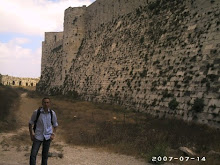A precious success of the golden age of Greek civilization, the magnificent complex Doric temple known as the Parthenon is the largest structure built in Greece, and it has crowned the top point of the city skyline (acropolis means "upper town") since the 5th century B.C.
The amazing Acropolis is perched upon a limestone mount towering above the city of Athens. The ruins of the Acropolis consist of the Erechtheum, the Propylaea, the Temple of Athena Nike, and the magnificent Parthenon. The name Parthenon means “virgin’s chamber,” and was dedicated to the virgin Athena, the goddess of wisdom and patroness of Athens. The Parthenon was erected between 447 and 432 B.C by order of Pericles, and is considered one of the most perfectly proportioned buildings of all time. So precise was the Parthenon’s architect, Ictinus, that a discernible indent was incorporated into the straight lines of the structure’s long sides to lend the effect of appearing even straighter from a distance.Long before the now-ruined buildings on the hill were constructed, the site was considered a sacred place. Around 3500 BCE, Neolithic people settled upon the hill and built small shrines to their many deities. By 1400 BCE, it had become the residence for all subsequent kings of Athens. In the sixth century B.C, the first temple honoring Athena was constructed here, and henceforth the “Citadel of the Gods” was considered a goddess shrine for many centuries.
The Acropolis hill, or the “Sacred Rock” of Athens, is the most important site in Greece’s capital, centrally located in the oldest section of the city. The site is a bustling tourist destination all year round and is nearly impossible to miss. A General Admission ticket is valid for all the archaeological sites of Athens: the Acropolis site and museum, Ancient Agora, Theater of Dionysos Kerameikos, Olympieion, and the Roman Agora.
Greece's primary artistic event, the summertime Athens Festival, presents ancient dramas, operas, music, and ballet performed by local and internationally acclaimed artists. The 2ndcentury Odeon of Herod Atticus on the south slope of the Acropolis has legendary acoustics.





No comments:
Post a Comment